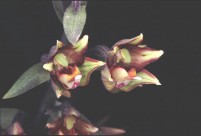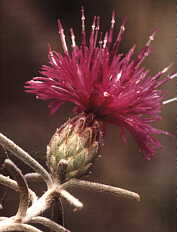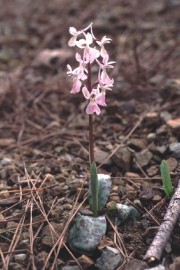|
Flora of Cyprus
|

Epipactis
veratrifolia
|
With its approximately
1.800 species and subspecies of flowering plants, Cyprus, is an extremely
interesting place for nature lovers and has all the attributes which make it
a botanist's paradise. Being an island, it is sufficiently isolated to allow
the evolution of a strong endemic flowering element. At the same time being
surrounded by big continents, it incorporates botanological elements of the
neighbouring land masses.
About 8% of the indigenous
plants of the island, 125 different species and subspecies, are endemic. The
island's great variety of habitats, attributed to a varied microclimate and
geology, is the main reason which contributed to this high number of
endemics.
The dry, maquish-covered
and rock-strewn hills present little proof that Cyprus is home to a large
variety of wild flowers and plants, many of which are to be found in no
other country. In spring and late autumn will confront a wild blossoming of
colour, with many poppies, buttercups and anemones extending as far as the
eye can see, while the Troodos Mountains are home to spectacular orchids and
other rare endemic species.
Of the 20,000 or so orchids known as botanists, some 45 species are to be
found in Cyprus and one of these the Kotchy's bee orchid is distinctive to
the island. Cyprus features some 130 endemic plants of which 45 are found
only on the high slopes of the Troodos Mountains.
|

Centaurea
akamantis
|
The best time to see the
wild flowers is in early spring (February and March) when most of the
species enjoy a short period of blossoming and take advantage of the usually
moist climate at this time of the year. There is a second period in late
autumn (October and November) when flowers can also be enjoyed.
The main areas for flower spotting are the slopes and summit region of the
Troodos Mountains and the Akamas Peninsula. In order to get the best out of
flower spotting, enthusiasts will need to spend plenty of time walking and
searching carefully since many species are limited to small geographic areas,
sometimes to only a few hundred square metres.
|

Orchis
Anatolica
Troodi
|
Orchids are the most popular wild flowers for enthusiasts. The one endemic
orchid-Kotschy's bee orchid is an exquisite species looking much like a bee
both in its shape and patterning. The Troodos helleborine, while not endemic,
grows mainly on the slopes of Mt. Olympus. Other orchid varieties include
the slender, pink-coloured Troodos Anatolian orchid, the cone shaped
pyramidal orchid, the giant orchid and the colourful woodcock orchid.
The subtle white and yellow Cyprus crocus from the Iris family is an
endangered species protected by law and is found commonly at high altitudes
in the Troodos Mountains. The delicate, dark red Cyprus tulip is another
rare species also protected by law and is today restricted to the Akamas
Peninsula.
Less stunning but still distinctive Cypriot flowers are the three-coloured
chamomile, the purple rock cress and the hard to miss Cyprus cotton thistle,
which makes its appearance during the long hot summer months.
|
